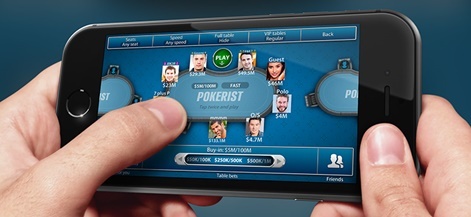Sam Forrest is Director of Global Communications and Content at KamaGames.
Here's a paradox: innovation in gaming often emerges in the same way, in expected genres. RPGS and triple-A shooters, for instance, are expected to become deeper and better-looking every year, and new console lifecycles are where people often look for seismic technological leaps.
That only tells part of the story though, and social casino games have also adapted and evolved in gratifying ways in recent years.
Taking things into perspective, the social casino industry is fairly young and still very much evolving. Not so long ago it was a PC industry, Facebook-dependent, and with an extremely niche audience.
However, the social casino world is quickly maturing and as such, you would expect to see a lot more focus on growth through optimisation of the games and their different components.
Alongside that, we are already seeing the addition of skill-based gaming mechanics being introduced as routes to provide a solid way to expand the demographics of social casino games.
Imagine looking at your dining room table through your phone screen and seeing your cards on the table, but they are surrounded by the trappings of a casino.
In a recent interview, Daniel Kashti, KamaGames' Chief Marketing & Operations Officer said that social casino games are evolving, and in doing so, are taking on elements that appeal to more traditional gamers: "You see the influence of other genres such as MMOs and RPGs on the social casino ecosystem and the introduction of different types of metagames designed to attract and retain mainstream gamers.
"Other trends to look out for include new platforms and technology which will introduce new and immersive ways to interact with games as well as with others players such as HTML5 (specifically within messaging platforms), VR and AR."
AR and VR
Mobile casinos (both social casino and real money operators) were the most recent seismic shift in online gaming, but AR and VR might well be next and could be just as big.
Jackpot City NZ are looking into bringing VR to their online gambling offering while in the United States, Virtual Roulette from Micro Gaming won Innovation of the Year at the ICE Total Gaming Awards 2016.
You can easily see why AR and VR would be so appealing to mobile casino players. Imagine looking at your dining room table through your phone screen and seeing your cards on the table, but they are surrounded by the trappings of a casino; a table covered in green velvet, the dealer’s deck, the dealer and avatars of other players.

Augmented Reality had its watershed moment last year with Pokemon GO (despite the more recent challenges its facing to keep players engaged), but card games of every genre are arguably even better suited.
Virtual Reality casino games are also in their infancy too, however the possibilities are literally infinite. You could be playing a VR casino game in the environment of your choice, whether it's a basement speakeasy, the set of a rap video, a glamorous casino or the rec room of a space ship.
The average social casino game in 2017 is more playable, user-friendly and at the same time more complex than in 2010.
Fantasy card games are already exploiting this possibility with games like Dragon Front bringing its players into an animated, steampunk fantasy world and more traditional card games like solitaire are getting the VR treatment.
According to market research firm, IDC, worldwide revenues for the augmented reality and virtual reality markets are projected to approach $14 billion in 2017, but that forecast is set to explode to $143 billion by 2020.
There was a record $2.3bn invested in VR in 2016, and that number is expected to climb as Facebook alone has invested in 11 VR and AR companies.
"Deeper" Casino Social Games
The everyday user experience of social casino games is changing too, albeit in subtler ways. The past year has brought richer content featuring more P2P interactions with gamers now sending one another animated emojis, personalised "gifts", and voice and text communications.
Compared to some social media platforms, a typical social casino game’s interactions are policed and monitored with relative stringency.
The mechanics are evolving too, making games richer and more complex. Skill is becoming a greater factor, with narrative elements also starting to emerge.
Medium to long-term fans of the games expect to progress, and to build up their in-game personas in a richer, more personalised way than before. This echoes RPGs and multiplayer FPS games, which reward time investment and skill.

All of this wouldn't mean much if the user experience didn't benefit, but it does. The longer agame genre exists, the more time developers have to tweak the game-play and overall experience. The average social casino game in 2017 is more playable, user-friendly and at the same time more complex than in 2010.
Whilst social casino gamers are playing on more platforms than ever before ranging from their phones to their TVs, and are enjoying the influence and promises of what eSports, VR and AR could bring, the best developers continue to keep their eyes on the most important factors – gameplay and the user experience.
In the virtual world of casino games, it's the players who are always getting the best deal.





















